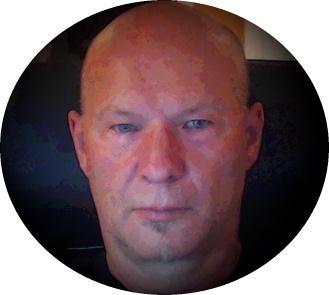Pondering the scale of the cosmos can feel as if you’re peering over the edge of the brink; it can be daunting enough to make you want to flee to the comforts of working, commuting, and other quotidian endeavors. But in Waves in an Impossible Sea: How Everyday Life Emerges From the Cosmic Ocean , theoretical physicist and science communicator Matt Strassler doesn’t flinch in the face of the universe. Published this week, Strassler’s book expands on the ideas he’s explored for years on his blog, Of Particular Significance. Readers are given a window into how the fundamental laws that govern the universe shape our daily experiences, and how even the most exotic phenomena are not as alien to our day-to-day as they may seem. Strassler recently spoke with Gizmodo about the book’s origins and goals. Below is our conversation, lightly edited for clarity. Isaac Schultz, Gizmodo: There’s this interesting dichotomy between the physics that’s happening here on Earth, what I call “looking down,” and the physics that’s astronomical observation—“looking up,” so to speak. And I was wondering if you have thought about the same thing, and how you see that relationship. Matt Strassler: One of the first things I try to do in the book is to break that dichotomy down. Because we do have this tendency to think about the universe writ large, this big place that we live in. And then there’s kind of this tiny stuff going on inside of us or inside of the materials around us, and we don’t really connect them. But of course, they are profoundly connected. And, you know, the universe—we used to call it call it outer space, and we think of it as mostly a vacuum. It’s emptiness. But the stuff that’s inside of us is also mostly empty. It’s the same emptiness. And so there is no distinction between the outer-ness and the inner-ness. It’s the same stuff doing many of the same things. We’re not disconnected from that larger universe. We’re actually, in some sense, made from it. And so, that is a message which I wanted to be able to convey that I hope will change people’s perspective on how they think about what it is to be alive in this universe. That we don’t just live in it, but we grow from it in a very meaningful sense: not just in a spiritual one, but in a very explicit physics sense. Gizmodo: Yeah. Whenever I’m slightly stressed out, I remind myself that I am just dying particles. Strassler: We are much more than that. But even when we say we are particles, we are missing something. In English, by a particle we mean a little localized thing, like a dust particle, that’s not connected to everything else. But when we understand that what we call particles are actually little ripples, little waves in the fields of the universe, and the fields of the universe extend everywhere. Across the entire universe. That’s a very different way of understanding what we’re made from. We’re not made from these little localized things that move around in a universe. We’re made from ripples of a universe, and that is a very different picture. Gizmodo: The crux of the book is this relationship between our modern understanding of physics and human life, human existence as we experience it. When you were writing the book, did you have a specific reader in mind? Who do you hope will, you know, stumble across this title and pick it up? Strassler: There are certainly some readers who read a lot of particle physics books already, and I hope that for them, what I’m providing is a way of looking at something they already know. And in particular a way of understanding what the Higgs field is all about. For those readers, it’s something they will not have seen before. But I also had in mind that there are a lot of friends of mine, family members, who don’t read the books about particle physics precisely because they’re rather difficult to understand and often seem irrelevant to their lives. The goal of this book was to strip away, as much as possible, the things that don’t matter to our ordinary daily existence and focus on the things that do. And try to tell a story, which certainly doesn’t explain all of particle physics by any means, but walks a path that takes the reader through all of the things that they would need to know to start from scratch and come out the end with a sense for how the universe works and how we fit in it. I hope that I’ve provided a path for a reader who is curious but willing to take the time that it requires to understand subjects that are that aren’t hard just because “physics is hard.” They’re hard because the universe is hard. It’s hard for me. I can’t make it any easier than it is for me. Gizmodo: That’s going to be the headline. “Physicist Confesses: ‘It’s Hard For Me, Too.’” Strassler: Okay. I’m happy with that. Gizmodo: How did this book emerge from the work that you’ve been doing for years? Strassler: I was a full-time academic scientist for a good two decades. I had always been interested in doing public outreach. But I had never had really that much time being a full-time scientist. There was a certain moment in my career where it wasn’t clear what I wanted to do next. And I started a blog at that point. That was just before the expected and then actual discovery of what is known as the particle called the Higgs boson. The story of the Higgs particle is really a story of a field known as the Higgs field, which is much more important to us than the Higgs particle is. The Higgs field affects our lives in all sorts of ways. But to understand what the Higgs field is and how it does what it does, which is typically what people ask me, requires some understanding of both Einstein’s relativity and quantum physics. There wasn’t any way to write the book without starting with those things. Even though explaining the Higgs field was the original motivation, I discovered that really this is a book about what we know today based on the last 125 years of scientific research in physics: what is the big picture? How does it all fit together? And once you see that—once you understand what particles actually are and how they emerge from relativity on the one hand and quantum physics on the other—then it’s not so hard to explain what the Higgs field is. But you have to spend two-thirds of the book to get to that point. Gizmodo: When you say to someone that you’re going to open with relativity and quantum physics, it’s a great way to end the conversation. Strassler: There is that risk, right? But that’s part of why I really opened with the questions about those subjects that are not even obviously about them. They are questions about daily life. And the fact is that these subjects, which seem remote and very esoteric… they’re not. They’re deeply ingrained in ordinary human experience. And that was really what I wanted to convey in this book, that these rather strange-sounding subjects that originate with Einstein and are made often in the media and by scientists to seem, “gee whiz”—and they are—they’re more than that. They are the foundations of our daily experiences. And so I wanted to bring that sense of how important these things are to us, to all of us. Gizmodo: I think that, scientists on the one hand and science communicators on the other, struggle with this issue of, well, it’s not going to be possible to convey all the nuance in, say, a 400-word article. It’s just not going to happen. It’s more about writing the least-wrong thing than the most-right thing. You wrote a book that grapples with complex science. How were you checking to make sure that this would actually grok to the average reader? Strassler: Gizmodo: It’s been over ten years since the Higgs discovery. How do you go about writing this book, thinking about a post-Higgs world and trying to address the next big question? Strassler: There was a way in which, 10 years after the Higgs discovery, and also with the discovery of gravitational waves, things came out more or less the way we thought they would. There were no huge surprises that completely changed the way we think about things. So it’s a good moment to take stock and to look at what we have learned from Einstein’s relativity, on the one hand, and from quantum physics and all of its realization in particle physics on the other, and see how it all fits together and try to really describe that as a package. To use a cliche, it’s really more like the end of the beginning here. We have achieved something that is really remarkable in the past 125 years. But we’re clearly also in some ways still at the beginning of our understanding of how the universe really works. Gizmodo: One question that I was left with was basically, where is this next breakthrough going to come from? Do you have any particular preference for the variety of wonderful experiments going on right now in particle physics, in plans for gravitational wave observatories, all that jazz? What are you most excited about on the physical horizon? Strassler: All the way up to the discovery of the Higgs boson, there has been a path. But there’s always been something where it’s clear that there are things we need to know that in some way feed into the deepest questions about how the universe works. And for the first time in 150 years, that is no longer true. We do not now have a clear path. We have many possible paths, and we don’t really know which one is the best one. And this is part of why there is so much controversy about particle physics right now. It’s because there are definitely things that we know give us a decent chance of finding something new. But we don’t have the kind of confidence that we would have had 30 years ago or 60 years ago, that the next wave of experiments definitely will answer one or more of the questions that we have. So when you ask me what is my preferred direction, I would prefer that the Large Hadron Collider, which has 10 more years to run, discover something. Because that would make it a lot easier to know what to do next. And the machine will run for 10 more years, producing 10 times as much data. So we do have that opportunity. But, I would like a clue from nature before answering that question. Gizmodo: You mention that the LHC is keeps on ticking and you know, the high-luminosity LHC is on the horizon. Do you anticipate that kind of juicing the the collider will yield results? Strassler: I’m not a person to express optimism or pessimism about what nature may deliver to us. I mean, I don’t think I have the insights into nature to guess. But what I can say is that there is an enormous amount still to do, even with the data that we have. It is certainly possible that there is something to discover in the existing LHC data, in addition to the opportunities that having 10 times that data will offer. So, I think people are sometimes too quick to imagine that, “oh well, the LHC looked. It’s not there. We’re done.” No, no, no, no. The LHC produces an enormous pile of data, and every analysis you do has to cut through that data in a particular way. I wouldn’t say optimistic or pessimistic, but I would say I’m cognizant of the fact that there is still a tremendous amount left to do at the LHC, and we should definitely not be writing it off at all at this point. What we can probably say with some certainty is that the most popular ideas for what might be found at the Large Hadron Collider are mostly ruled out or unlikely at this point, but there are plenty of things, plenty of examples in history where the thing that was really interesting was something that no theoretical physicist had imagined. And we may just need to be really imaginative about how we analyze the data at the LHC.
This content was originally published here.





















